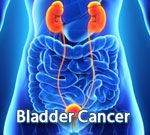T-Cell Lymphoma Cutaneous
What Is Non-Hodgkin Lymphoma?
Non-Hodgkin Lymphoma Cells
Non-Hodgkin lymphoma is cancer that begins in cells of the immune system. The immune system fights infections and other diseases.
The lymphatic system is part of the immune system. The lymphatic system includes the following:
- Lymph vessels: The lymphatic system has a network of lymph vessels. Lymph vessels branch into all the tissues of the body.
- Lymph: The lymph vessels carry clear fluid called lymph. Lymph contains white blood cells, especially lymphocytes such as B cells and T cells.
- Lymph nodes: Lymph vessels are connected to small, round masses of tissue called lymph nodes. Groups of lymph nodes are found in the neck, underarms, chest, abdomen, and groin. Lymph nodes store white blood cells. They trap and remove bacteria or other harmful substances that may be in the lymph.
- Other parts of the lymphatic system: Other parts of the lymphatic system include the tonsils, thymus, and spleen. Lymphatic tissue is also found in other parts of the body including the stomach, skin, and small intestine.

This picture shows lymph nodes above and below the diaphragm. It also shows the lymph vessels, tonsils, thymus, and spleen.
Because lymphatic tissue is in many parts of the body, Hodgkin lymphoma can start almost anywhere. Usually, it's first found in a lymph node.
Non-Hodgkin Lymphoma Cells
Non-Hodgkin lymphoma begins when a lymphocyte (usually a B cell) becomes abnormal. The abnormal cell divides to make copies of itself. The new cells divide again and again, making more and more abnormal cells. The abnormal cells don't die when they should. They don't protect the body from infections or other diseases. The buildup of extra cells often forms a mass of tissue called a growth or tumor.
Risk Factors
Doctors seldom know why one person develops non-Hodgkin lymphoma and another does not. But research shows that certain risk factors increase the chance that a person will develop this disease.
In general, the risk factors for non-Hodgkin lymphoma include the following:
- Weakened immune system: The risk of developing lymphoma may be increased by having a weakened immune system (such as from an inherited condition or certain drugs used after an organ transplant).
- Certain infections: Having certain types of infections increases the risk of developing lymphoma. However, lymphoma is not contagious. You cannot catch lymphoma from another person.
The following are the main types of infection that can increase the risk of lymphoma:
- Human immunodeficiency virus (HIV): HIV is the virus that causes AIDS. People who have HIV infection are at much greater risk of some types of non-Hodgkin lymphoma.
- Epstein-Barr virus (EBV): Infection with EBV has been linked to an increased risk of lymphoma. In Africa, EBV infection is linked to Burkitt lymphoma.
- Helicobacter pylori: H. pylori are bacteria that can cause stomach ulcers. They also increase a person's risk of lymphoma in the stomach lining.
- Human T-cell leukemia/lymphoma virus type 1 (HTLV-1): Infection with HTLV-1 increases a person's risk of lymphoma and leukemia.
- Hepatitis C virus: Some studies have found an increased risk of lymphoma in people with hepatitis C virus. More research is needed to understand the role of hepatitis C virus.
Age: Although non-Hodgkin lymphoma can occur in young people, the chance of developing this disease goes up with age. Most people with non-Hodgkin lymphoma are older than 60.
Researchers are studying obesity and other possible risk factors for non-Hodgkin lymphoma. People who work with herbicides or certain other chemicals may be at increased risk of this disease. Researchers are also looking at a possible link between using hair dyes before 1980 and non-Hodgkin lymphoma.
Having one or more risk factors does not mean that a person will develop non-Hodgkin lymphoma. Most people who have risk factors never develop cancer.
Symptoms
Non-Hodgkin lymphoma can cause many symptoms:
- Swollen, painless lymph nodes in the neck, armpits, or groin
- Unexplained weight loss
- Fever
- Soaking night sweats
- Coughing, trouble breathing, or chest pain
- Weakness and tiredness that don't go away
- Pain, swelling, or a feeling of fullness in the abdomen
Most often, these symptoms are not due to cancer. Infections or other health problems may also cause these symptoms. Anyone with symptoms that do not go away within 2 weeks should see a doctor so that problems can be diagnosed and treated





































